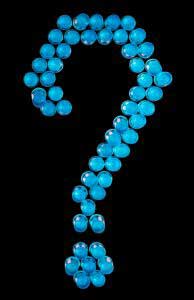One of the products that immediately came to my mind was fusible web. Fusible web is a synthetic fiber that melts when you heat it. Brand names for these products include Steam-A-Seam, Stitch Witchery, and others. If you’re not familiar with it, think of it as thin sheets of fabric infused with glue. If you need two pieces of fabric to stick together, or you’re working with a fabric that needs a little extra support to either stand up or hold still, then you may end up using your iron to attach some fusible web to your project. You’ll often find fusible web in applique, t-shirt quilts, and used as interfacing in clothing. But honestly, I’ve never tried to research it and figure out whether it’s a product I can feel good about using. Can it hurt me by touching it? Is it safe to heat glue with an iron and breathe at the same time? I have educated myself about food, personal care products, and clothing, and made (not enough) changes in my life based on what I found. So far, though, I haven’t given my crafting products much scrutiny beyond my varied attempts to use my local thrift store as a craft supply shop. So just how easy is it to find out whether a product is safe and eco-friendly? Using fusible web as my test case, I set out to get some answers. Some of what I found may be old hat to y’all, but I learned quite a lot. In today’s post, I cover safety issues ; watch for Part 2 about environmental issues next week. My first stop on my research odyssey was the packaging of the product in question. I have some Steam-A-Seam and Lite Steam-A-Seam 2 in my studio upstairs, so I went to take a look. On the back, I found the following statement: Huh? Time for a little Google searching. The Art and Creative Materials Institute, a non-profit association of manufacturers of art and craft supplies, explains LHAMA thusly: The labeling standard ASTM D4236-94 was developed as a voluntary standard by the private standards developing company ASTM previous to the passage of LHAMA. The final federal rule on labeling was issued in 1992, and it codified the ASTM standard as a mandatory requirement. According to Michael McCann of the Center for Safety in the Arts, the way the federal rule defined hazards as follows (emphasis mine): So if my packages of fusible web are correctly labeled, I shouldn’t have to worry about getting poisoned today (acute toxicity) or that pesky brain damage that Autumn was mentioning (chronic hazard). The history of LHAMA that I’ve read indicates that it was passed into law with the support of arts organizations in cooperation with manufacturers who wanted a single federal law to preempt individual state laws that were being passed. So my guess is that LHAMA is better than nothing, but not as aggressive as it could be. The recent scuffle about BPA in baby bottles (and the FDA’s decision to re-evaluate their previous position) has shown that the feds aren’t always the leaders on these issues, but at least there are some requirements for testing and labeling these products. Leslie also pointed out to me that the testing is done on single products, not products in combination, “like mixing prescription drugs.” At least when you’re using prescription drugs, your doctor and pharmacist are supposed to check for interactions. I don’t think your local craft store personnel are qualified to provide that kind of technical support. Now to evaluate environmental impact… check back next week for the next installment.
Resources for Arts and Crafts Safety Information
There are a number of online resources for checking on the safety risks of various products:
Health and Safety in the Arts: A Searchable Database of Health and Safety Information for Artists by the City of Tucson’s Environmental Management Division Art and Creative Materials Institute’s database of safe arts and crafts supplies (which I found out about originally from our sister blog Eco Child’s Play), but keep in mind that ACMI is an association of manufacturers and not a disinterested party National Institutes of Health Household Products Database that includes a section for supplies used in Arts and Crafts. The information in this database “is taken from a variety of publicly available sources, including brand-specific labels and Material Safety Data Sheets prepared by manufacturers.”
While not as wide-ranging as the Skin Deep Cosmetic Safety Database by Environmental Working Group, it’s good that there’s something. Here are a few other resources for your perusal:
Art and Craft Safety Guide (PDF), Publication 5015, Consumer Product Safety Commission, focusing on children’s arts and crafts Keeping the Artist Safe: Hazards of Arts and Crafts Materials, a directory of information created by the Specialized Information Services of the National Library of Medicine at the National Institutes of Health Resources: Art – Supplies at Greening Schools, a joint effort of the Illinois Environmental Protection Agency (IL EPA) and the Illinois Waste Management and Research Center (WMRC)
[Image by scol22.]
